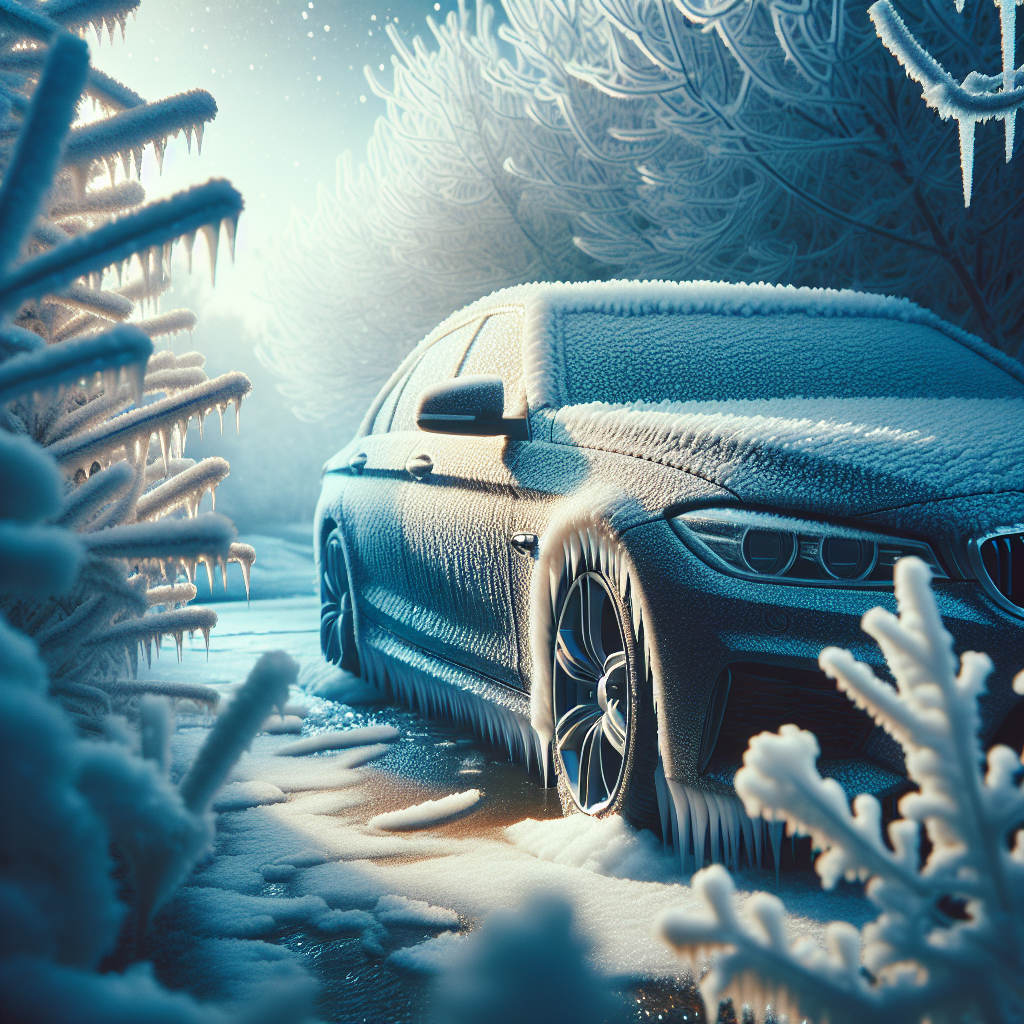Protecting Your Vehicle’s Exterior
Why It’s Crucial
When winter rolls in, the first thing I think about is my car’s exterior. The salty roads and slushy mess can wreak havoc on the paint job. I always recommend washing and waxing your car consistently during this season. The wax acts as a protective shield, keeping the grime at bay and preventing rust. Trust me; I’ve learned the hard way how damaging winter can be to a vehicle’s exterior.
Moreover, autumn leaves and winter grime can scratch your paint if not removed promptly. A good detail includes a thorough wash, followed by a quality wax that will protect your car from all those winter elements. Even if you can’t see it, there’s a lot happening on that shiny surface!
And don’t forget about the headlights! They can become cloudy over time, but with a little polish, they can be brightened up, ensuring you see well during those dark winter evenings. Visibility is key, and this simple step makes all the difference.
Choosing the Right Products
I’ve tried countless products out there, but I’ve found that using high-quality car wash soap and wax pays off in the long run. I always keep an eye out for brands that are specifically designed to combat winter conditions. You want something that not only cleans but leaves a protective barrier. Some of my buddies swear by ceramic coatings—it’s a bit more of an investment, but man, does it work wonders!
When selecting a wax, I usually go for a synthetic option because they handle temperature extremes much better than natural waxes. Plus, they can last longer, which means fewer trips out in the cold to reapply. Convenience in winter? Yes, please!
Lastly, don’t skip out on a good wheel cleaner. Grime can really mill into your wheels, and you want them looking sharp, too. A good scrub ensures that salt doesn’t cause corrosion over time.
Regular Inspections
Taking the time to regularly inspect the exterior of your car throughout winter is vital. I like to do this whenever I fill up my gas tank. Look for scratches or signs of wear on the paint, and don’t ignore any chips—those little spots can turn into bigger problems if left unattended.
Check your undercarriage as well. Salt and debris accumulate there more than you realize. A quick rinse after severe weather can keep the rust away, and trust me, you don’t want to face costly repairs down the line.
I also recommend keeping some basic touch-up paint in your glove box. If you happen to spot a chip while out and about, it’s good to be prepared. This small step can really make a huge difference over the long haul.
Maintaining Your Interior
The Winter Elements Invasion
Winter doesn’t just affect the outside of your car. The interior is often the forgotten realm. Wet and muddy boots can easily dirty your carpets and mats, leading to permanent stains. For me, the first step is to throw down some weather-resistant floor mats. They make life so much easier!
I typically use a vacuum to tackle all those crumbs and dirt. One thing I can’t stand is seeing grime build-up on the dashboard. A quick wipe with a microfiber cloth gets it shiny and new again.
Each season, I like to use a fabric refresher or a spray specifically designed for auto interiors. It seems small, but having a fresh-smelling car, especially in winter, really uplifts the mood, don’t you think?
Dealing with Moisture
Make no mistake, winter can lead to a lot of moisture inside the car, especially if you’re driving with wet clothes. I’ve learned the hard way that keeping a towel or two in the trunk helps! I dry off my gear before getting into the vehicle; it’s one less thing to worry about.
Investing in a good moisture absorbent product, like silica gel packs or even a car-specific product, can avoid that dreaded mildew smell. Nobody wants to sit in a stinky car, especially on those long drives home.
Also, during the winter months, I always crack the windows for a few minutes when parked in the garage. It helps to balance the humidity levels inside, preventing the growth of mold and mildew.
Keeping Your Windows Clear
Visibility in winter is oh-so-important. Ice and foggy windows are a real pain, and I’ve learned that using a good-quality windshield cleaner makes all the difference. I prefer a product that’s formulated to prevent freezing because I’ve had times when I couldn’t even see during my morning commute thanks to frost.
A good scraper is also essential; you’ll thank yourself for choosing one with a comfortable grip. And let’s be real—who wants to be out scraping their car at 7 AM?
Additionally, I always ensure my windshield wipers are in good working condition. I replace them regularly, especially when winter arrives. There’s nothing worse than a streaky windshield on a rainy or snowy day. So, I keep an extra pair handy for when I get home.
Preparing for Winter Driving
Check Tire Health
As a winter driving enthusiast, tire health is a non-negotiable for me. I make it a point to check the tread depth consistently. I oftentimes use the penny test—it’s simple and effective. If you can see Lincoln’s head, it’s time to invest in new tires. Proper tread is essential when roads become slippery.
I also switch to winter tires for added grip and control. They’ve made my drives so much safer in those nasty conditions. It’s important to ensure they’re properly inflated too—I typically check my tire pressure every month or so.
Don’t forget about your spare tire! Make sure it’s in good condition and ready to go if the need arises.
Battery Check
Nothing is worse than a dead battery in winter. I’ve lost count of how many times I’ve had to jumpstart my car when it’s freezing outside. That’s why I always check the battery life before the season starts. Most auto repair places will do this for free!
If you find your battery is old, consider replacing it before winter hits. The cold weather can be really taxing on older batteries, and I’ve had mine give up on me right when I need it the most.
Also, do consider keeping jumper cables in your trunk—you never know when you’ll stumble upon a fellow driver who needs a boost during those chilly months!
Emergency Kit Essentials
I can’t stress enough how important it is to have an emergency kit in your car when the winter weather hits. I usually pack necessities like an extra warm blanket, some snacks, a flashlight with extra batteries, and a first aid kit.
It’s also wise to include some basic tools, like a multi-tool and a flashlight. And, of course, I can’t forget to add extra winter gear like gloves, a hat, and a shovel that can fit in my trunk.
You never know when the weather might take a turn, and being prepared can save the day.
Staying Safe on the Roads
Driving Adjustments
Driving in winter requires a shift in habits. I always remind myself to reduce my speed—those icy patches can sneak up on you. It’s better to be safe than sorry! Tailgate distance also becomes more crucial as stopping distances increase on slippery roads.
Honestly, I also practice smooth steering inputs. Quick, jerky movements can lead to skids, and being a seasoned driver, I know how quickly that can happen. I tend to drive at a steady pace, even when I’m anxious to get home.
Finally, I keep my phone on me at all times while driving in winter. You never know when you need to call for help, and it’s good to have emergency contacts saved, just in case.
Staying Informed
I always check the weather forecast before starting out on any winter trips. Having a general idea of what to expect can steer the way I plan my journeys. Whether it’s checking for snow tracks or heavy rain warnings, knowledge is power!
Additionally, I tune into local traffic reports for updates on road conditions. This becomes especially crucial during winter storms when road conditions can change rapidly.
Preparing an alternative route or plan can reduce anxiety during potentially dangerous weather. If I know it’s going to be bad, I might just choose to stay put until it passes.
Handling Emergencies
In the event of a breakdown, my first step is to stay calm. It’s easy to panic, especially in bad weather. I always try to pull off to the side of the road, preferably somewhere safe and visible.
Making sure my hazard lights are on is vital. Other drivers need to be aware of my situation. I once had to wait for help, so I always pack a book or something to keep me entertained (and calm) while I wait.
Lastly, if I ever feel unsafe or overwhelmed, calling for roadside assistance is the smartest move. There’s no shame in asking for help—it’s better to be safe than sorry!
Conclusion
Winter car care might seem like a mundane task, but trust me, it can save you a world of trouble down the line. Keeping your vehicle in top shape during the harsh months leads to a safer, more enjoyable driving experience. From protecting the exterior to ensuring you’re prepared for emergencies, each of these tips is important.
When you think about it, your car is more than just a means of transportation—it’s a lifeline during those cold winter months. So, take the time to give it the love and care it needs, and you’ll be rewarded with a reliable companion on the road.
FAQ
1. Why should I detail my car for winter?
Detailing your car for winter protects it from harsh weather elements like road salt, grime, and moisture, which can cause significant damage. A good wash and wax will shield your car’s paint, while an interior detail keeps the inside comfortable and clean.
2. When is the best time to detail my car for winter?
Ideally, you should detail your car right before winter hits, ideally in late fall. However, you can do quick touch-ups throughout winter as needed.
3. What products do you recommend for winter car care?
I recommend quality car wash soaps, synthetic waxes, moisture absorbers for the interior, and winter tires. Don’t forget good glass cleaners to keep your visibility clear.
4. How often should I wash my car during winter?
I suggest washing your car every couple of weeks during winter, or more often if you notice heavy salt build-up or grime accumulating.
5. What should I include in my winter emergency kit?
Your winter emergency kit should include warm blankets, snacks, a flashlight, first aid supplies, a shovel, and jumper cables. Staying prepared will give you peace of mind during unpredictable winter conditions.


